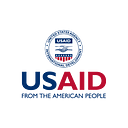A World Without Water
When disasters strike, the people affected are often left without the most critical resource to help them survive.
It’s said that a person can go for more than three weeks without food, but only about three days without water. We all know that everyone needs water to drink. But have you thought about all of the other ways that water keeps us alive? From handwashing, cooking, cleaning, and farming, we need water to survive, in more ways than one.
Around the world, disasters and crises have left tens of millions of people without a safe source of water. And every single day, USAID works to help them get access to this critical resource.
Not a Drop to Drink
After disaster strikes, providing safe drinking water is one of our top priorities. Together with our partners, USAID’s Bureau for Humanitarian Assistance works to construct new wells and community water points, as well as provide repairs to existing ones. We also help train community members to maintain these structures themselves. We provide chlorination tablets and support desalination services to make water safe to drink. Sometimes, we help repair municipal water systems, which is what he had to do when Typhoon Haiyan ripped through the city of Tacloban in the Philippines. In Syria and Iraq, when water infrastructure was damaged beyond repair, we worked with our partners to truck in water for people displaced by ongoing fighting.
Clean Hands, Healthy Body
Handwashing is a simple act with a huge impact. After disasters strike, people are more susceptible to illness and death because waterborne diseases are more likely to spread. Proper handwashing keeps people healthy, which is why we work with partners to provide water, buckets, soap, and other hygiene materials so people have the basics.
Handwashing is a simple act with a huge impact. After disasters strike, people are more susceptible to illness and death because waterborne diseases are more likely to spread. Proper handwashing keeps people healthy, which is why we work with partners to provide water, buckets, soap, and other hygiene materials so people have the basics.
USAID also supports public health messaging campaigns to teach people why washing their hands is so important. Our partners also give basic tips on how to wash your hands well, and when you should be sudsing up.
Food for Thought
Crops can’t grow without water. In many parts of the world, when the rains stop, communities go hungry. But, after a severe drought left 18 million Ethiopians in need of food assistance, USAID worked to break this vicious cycle. We trained farmers to diversify crops and build infrastructure like wells and small dams to collect water to irrigate their fields. The miracle of managed water has helped farmers grow more food, earn more money and reliably feed their families.
“Saving” for a Not-So-Rainy Day
USAID also works with communities to prepare for future disasters through water conservation activities. This includes helping families and schools build systems that catch and store rainwater, or providing guidance on how to minimize the impact of drought. In Malawi, we trained 105 families how to dig trenches and collect water. In just three years, they had conserved enough water to be able to handle both drinking and irrigation activities. They also learned the importance of healthy nutrition and nature conversation, planting and irrigating fruit trees to help sustain a balanced diet.
Water is a finite and precious resource that everyone needs — especially communities affected by disasters who often lack enough water to drink, take care of their families, and tend to their crops and livestock. To make matters worse, climate change is shrinking the amount of water that people can safely use around the world. That is why we are working together with communities and empowering them to plan, develop, and manage their water resources. Because everyone deserves to have access to water.
Read more about USAID’s water, sanitation, and hygiene programs during disasters.
Follow USAID’s Bureau for Humanitarian Assistance on Facebook, Twitter, and Instagram.
